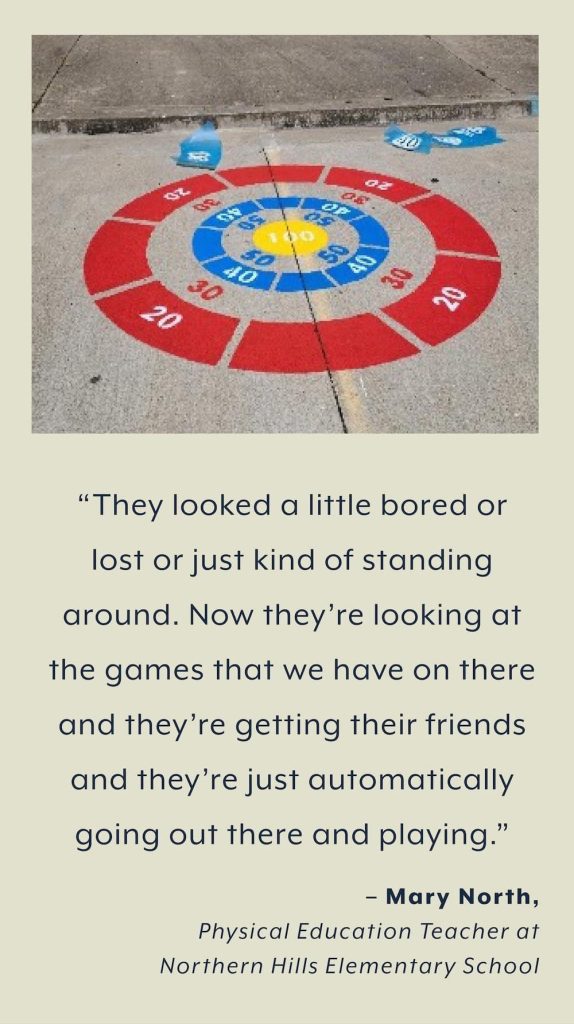
cThe program is based on the CDC’s Whole School, Whole Community, Whole Child model.
- Inweekly asked the CDC to explain the model. The program is focused on the mental and physical health of students – which explains why CDC developed it.

The success stories include:
Arizona: School Nurse (SN) HUDDLES – These virtual networking opportunities hosted on the third Wednesday of every month allowed school nurses and health staff to share ideas, address challenges, gather updates, and get support from the Arizona 1801 Grant Team.
Arkansas: The Arkansas Act 1220 of 2003 launched comprehensive efforts to curb childhood obesity. As a result, Arkansas district wellness committees are required to conduct assessments at the building and district level using CDC’s School Health Index (SHI). These assessments are traditionally completed through quarterly trainings on CSH topics. However, the COVID-19 pandemic dictated that the trainings be conducted virtually for the 2020–2021 school year. Fortunately, Arkansas was able to streamline each of the four quarterly CSH trainings from 6 hours to 3 hours, which increased participation from the previous school year by more than 25%
Louisiana: Louisiana Healthy Schools works with these priority LEAs (Title I schools) through June 2023 to use findings from their School Health Index assessment to expand health opportunities for students and inform statewide policy change and physical environment modification. Louisiana Healthy Schools collected YRBSS data in fall 2021 and School Health Profiles data in spring 2022 to assess student health needs and how the water bottle filling station program can support student health.
Oklahoma: A professional development opportunity led by a team of partners focused on integrating health into the school environment using CDC’s WSCC model. This move was timely because an October 2020 report released by the State of Childhood Obesity showed that, in Oklahoma, 18.8% of young people aged 10 to 17 have obesity, the eighth highest rate in the nation. To reduce this percentage and get students more physically active, the partnership created Painted Play Spaces, a systematic approach to offering more physical activity opportunities for Oklahoma students of all ages.
Oregon: In 2017, the Oregon legislature took steps to increase physical education minutes and physical activity opportunities for young people by passing a law (ORS 349.496) that requires K–5 students to receive at least 150 minutes of physical education per week for the school year and students in grades 6–8 to receive 225 minutes.
There are no examples on the CDC website of what Escambia Children’s Trust is trying to accomplish.
- Other states are taking a more focused approach on school nurse training, school health assessments, physical education, recesses and cafeteria menus.
Healthy Schools Escambia: Seeks to provide:
- on-site medical, dental, and vision care to students;
- supporting nutrition education through gardens, outreach, and workshops;
- establishing after-school programs focused on physical activity and academic support;
- strengthening social services through partnerships with behavioral health providers;
- engaging families in school-community activities and health education; offering after school tutoring by certified school-based teachers to support academic performance in critical subject areas;
- offering legal assistance and education to families; and
- providing intergenerational mentoring opportunities.
Healthy Schools Escambia is ambitious. If it works, the program would set a new national standard for Children’s Service Trust programming.
FROM CDC:
How did the Whole Community, Whole Child model start?
The Whole School, Whole Community, Whole Child (WSCC) framework was released in 2014 to meet the needs and support the full potential of each child by calling for greater collaboration across the community, school and education sectors. The WSCC framework is available for use by states and localities, including CDC’s Healthy Schools cooperative agreement recipients. Here is a link to an early article that explains the framework and its origins: How the Whole School, Whole Community, Whole Child Model Works: Creating Greater Alignment, Integration, and Collaboration Between Health and Education – PMC (nih.gov).
Additional background on the WSCC framework can be found in this Journal of School Health article: Lessons Learned From the Whole Child and Coordinated School Health Approaches – Rasberry – 2015 – Journal of School Health – Wiley Online Library.
- How successful has it been? All CDC Healthy Schools cooperative agreement recipients use the WSCC framework in some way. For highlights on program accomplishments, visit Stories of Achievement | Healthy Schools | CDC.
- What updates have been made? CDC has not released an updated WSCC framework.
- How many schools or school districts utilize the CDC model? All 20 CDC Healthy School Program funded recipients use the WSCC framework in their programmatic activities (Funded School Health Partners | Healthy Schools | CDC).
- Also, is there a school or school district that stands out to highlight? Oklahoma has used WSCC to improve professional development for teachers and school staff: Oklahoma | Healthy Schools | CDC.
For more background information, here is the link to the 2015 Journal of School Health (JOSH) edition that introduced WSCC: Critical Connections: Health and Academics – Michael – 2015 – Journal of School Health – Wiley Online Library.



